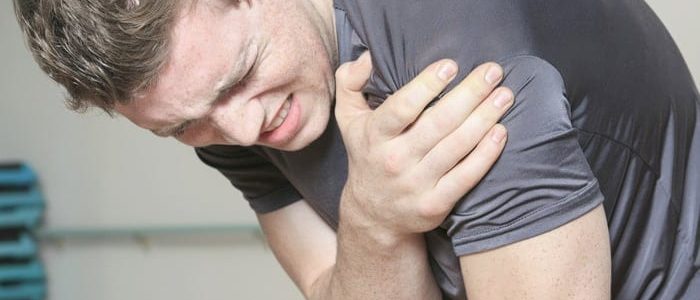
Your clavicle, or collarbone, is the long bone located at the top of the chest that stretches horizontally from shoulder to shoulder. One of the main functions of the collarbone is to hold the arms freely and supported, away from the trunk. Fractures of the collarbone are common.
Clavicle fractures are a common orthopedic injury, especially among infants and young children, that most frequently results from trauma. Most broken collarbones heal with ice, arm support, pain medicine, and exercises. The arm is supported either by a sling or a shoulder immobilizer. A shoulder immobilizer is like a sling but it also has a strap that goes around the waist. Surgery is also an option. You should consult your doctor to go over your options.
What Does a Broken Collarbone Feel Like?
A broken collarbone is usually pretty obvious. You might feel a crack when it happens.
Afterward, you will probably have:
- Pain and swelling
- Difficulty moving your arm and shoulder
- Sagging in your shoulder
- Grinding feeling when you try to raise your arm
- Bump around the area of the break
What is the Most Common Cause of Clavicle Fractures?
Clavicle fractures often happen in the following ways:
- A fall directly on your shoulder with your arm at the side
- Auto, motorcycle or bike accident
- Contact sports such as football
- Impact sports such as horse racing
- Birth canal injuries to a baby during childbirth
How Are They Treated?
Clavicle fractures are most commonly treated with slings or a figure eight splint. A sling supports the arm and positions the shoulder in such a way as to allow the fracture to heal properly. A figure eight splint wraps around the front of the shoulders and crosses in the back. The figure 8 helps to maintain shoulder posture while the bone heals.
The majority of clavicle fractures can be treated without surgery. However, many patients that were not treated with surgery have had persistent problems. Surgery may be needed for fractures that fail to heal, broken bones that come through the skin, or broken bones that threaten nearby nerves, blood vessels, soft tissues or joints. The surgery involves aligning the bone in the proper position and securing it in place with surgical hardware, such as screws and plates.
What Is Recovery Like?
Like with any injury, recovery from clavicle fracture differs with each person. Age is definitely a factor in the rate and completion of recover. Children may heal in three weeks, while adults may take four to six weeks to heal. People can generally return to their full activity level in about 12 weeks.
If you are suffering from a fractured clavicle, it may be time to consult a medical professional. The experienced and dedicated orthopedic surgeons at Ventura Orthopedics are here for you. We are committed to helping you through any procedure until optimum health, strength and mobility are restored.
Call us today at 800-698-1280 to schedule an appointment.

